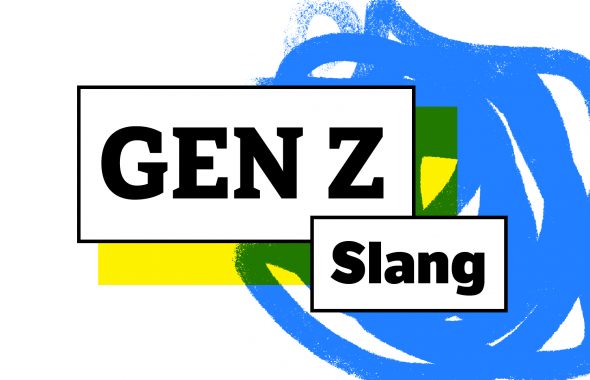Beginning in early 2021 and continuing through 2023, there has been a massive upheaval in the labor market. Hundreds of thousands of workers have voluntarily left workplaces they feel are unsafe, do not pay well enough, or to pursue careers more in line with their interests. This phenomenon was termed the Great Resignation by psychologist Anthony Klotz in 2021. Resignation in this context means to give up a job or position, not “submission.” While the exact causes of the Great Resignation are complex, it is clear that the growth of telework, historical wage stagnation, and fears of death or serious illness in the context of the COVID-19 pandemic radically changed the way that many people think—and talk‚ about work. To better understand this change, let’s look at the lexicon, or vocabulary, people have been using to describe it.
Do you feel like you have a handle on the difference between flex work and agile work? Can you tell your synchronous from your asynchronous work? Avoid boreout and challenge yourself with our (not at all work-like) quiz on all of these terms here.
work-life balance
The expression work-life balance has been in use since 1970. It means “a situation in which one divides or balances one’s time between work and activities outside of work.” With the growth of working from home and hybrid work (more on that in a second) during the pandemic, it became difficult for many to establish a work-life balance when they were no longer going to an office or worksite for their job. Finding a job that provides a reasonable work-life balance is a goal for many workers during the Great Resignation.
quiet quitting
The search for work-life balance may have inspired a trend known as quiet quitting. Quiet quitting is an informal term for the practice of reducing the amount of effort one devotes to one’s job, such as by stopping the completion of any tasks not explicitly stated in the job description. The term, which was popularized in 2022 in part by social media posts, implies that this practice is done secretly or without notifying one’s boss or manager. Quiet quitting doesn’t actually refer to quitting a job. The term is used in varying ways that refer to different methods of reducing productivity or the amount of work one performs.
quiet firing
Quiet firing is an informal term for the practice in which employers make workplace conditions worse for employees with the intent of driving some of them to quit. The term implies that this is done secretly or at least subtly enough to make it appear unintentional. The practice is thought to be done to avoid the financial and legal costs that an employer can incur when firing an employee. Just as quiet quitting doesn’t involve actually quitting, quiet firing doesn’t involve actually firing someone. In both terms, the word quiet is a reference to the secretiveness or subtlety of the actions. Quiet cutting is a related term that refers to a company’s practice of eliminating an employee’s job without firing the employee, typically by reassigning them to a lower-paying position or a role they are unqualified for.
quiet hiring
Quiet hiring is an informal term for the practice in which an employer fills workforce gaps in ways other than hiring new full-time employees, such as by training and/or shifting existing employees into different roles or using independent contractors to cover certain roles and responsibilities. It’s primarily used by workers and outside observers of the workplace, such as journalists and economists.
work to rule
Work to rule is the act of working only according to the strictest interpretation of written requirements and regulations, as a job action or protest. For example, they were offered a one-off payment of $1,000 each to end their unofficial work to rule. Unlike quiet quitting and its related terms, which were first recorded in recent years, work to rule dates back to the 1920s.
career cushioning
Career cushioning is an informal term for the practice of lining up future job opportunities while still employed at one’s current job. Career cushioning can involve a variety of actions that involve looking for a new job, including developing new skills, browsing job listings, and applying for new jobs. Typically, career cushioning is performed by a person who has some reason to fear that they will be fired or laid off from their job.
WFH
As we have already noted, a defining element of the pandemic era for those who are not frontline workers was the transition to working from home. While there have always been people who worked out of their houses, the growth of the use of home internet in the 1990s and 2000s gave rise to the phrase work from home. By the early 2000s, UseNet groups had already begun to use the abbreviation WFH for this, and its use exploded in 2021 when many people moved to WFH situations.
synchronous
There are two basic modes when it comes to online work: synchronous and asynchronous. Synchronous work is when workers and management work on the same project or task at the same time. For example, providing customer service is an example of synchronous work—the worker has to be working at a specific time with someone on a task.
asynchronous
Asynchronous work is when workers or management work on a task or project at different times. Asynchronous means “not occurring at the same time.” For example, in an asynchronous work model, one person can complete the first half of a project, share it with the workplace, and then another person can complete the second half of the task at any time, days, weeks, or even months later.
Go more in-depth about the differences between synchronous and asynchronous.
hybrid work
While remote work was popular during the pandemic, many workplaces are now opting to have their workers resume work in person at least a few days a week or month. This combination of telework and in-person work is known as hybrid work. Hybrid means “composite; formed or composed of heterogeneous elements.” Basically, hybrid work is a composite of remote work and in-person work.
flex work
Another option that workplaces have pursued to keep their staff happy is known as flex work, which allows workers to choose their own hours or non-traditional hours to complete their work, rather than enforcing a 9-5 Monday-Friday schedule. This is most conducive when the work itself is asynchronous. Flex is short for flexible, which in this context means “adaptable.”
agile working
Agile working is another concept that came to the fore during the pandemic. The basic idea of agile working is that workers can work “anytime, any place, anywhere.” Agile means “quick and well-coordinated in movement.” This model of work can incorporate both hybrid and flex work. It can also involve changing the workplace environment itself by making it more conducive to group work or providing different amenities like quiet rooms.
Now that we have a better understanding of how workplaces have changed during the Great Resignation, let’s take a look at some of the reasons workers are leaving their jobs for new ones.
she-cession
The word she-cession is a play on the word recession. A recession is when the economy contracts or declines. A she-cession is a recession that impacts primarily women. During the pandemic, when many schools and child care facilities were closed, parents were obliged to provide care at home. As a result of gender norms and expectations, the vast, vast majority of the parents who quit their jobs to take care of their kids were women. The re-entry of those women back into the workforce has been slow, and many have not gone back. For example, during the peak of the Omicron coronavirus variant in 2022, 875,000 men got new jobs, compared to just 62,000 for women.
burnout
Another reason workers cite for leaving their jobs is burnout, a term used to describe “fatigue, frustration, or apathy resulting from prolonged stress, overwork, or intense activity.” There are many reasons for burnout, but the anxieties of working during the pandemic no doubt heightened this feeling. In the ’70s and into the ’80s, burnout was also used to describe someone who takes drugs or drinks excessively. Today, however, it may be more closely associated with the idea of workers experiencing fatigue from overwork.
boreout
A play on burnout is boreout. Workers who experience boreout are, quite simply, so bored with their jobs that they develop psychological and physical symptoms such as anxiety, depression, and even headaches. The concept of boreout was developed by two Swiss businessmen, Peter Werder and Philippe Rothlin in 2007. While much is still unknown about this phenomenon, workers with boreout may be more likely to leave their jobs for something they find more stimulating.
anti-work
The anti-work movement is an anti-capitalist movement that promotes a “visceral rejection of work” as organized under capitalism. Anti-work does not mean anti-labor, but rather describes a hostility to the exploitative practices that many businesses use against their workers, such as low wages, inadequate workplace safety policies, and large workloads. The center of the anti-work movement is the subreddit r/antiwork, where people discuss union organizing, quitting their jobs, and other related topics. This movement became especially popular during the COVID-19 pandemic as many people pushed back against the unsafe practices of their employers.
tight labor market
Whether due to retirements, deaths, disabilities of working-age people, mass resignations, or other factors, the labor market at the moment is particularly tight, a term in economics meaning “characterized by scarcity or eager demand.” This means that more companies are trying to hire than there are workers for positions. As a result of this tight labor market, workers have more power or leverage over their employers than they have had historically.
cottage industry
So, what have all of these people who have left their jobs in the Great Resignation gone on to do? Well, some of them have opted to set up or join cottage industries in a particular niche that they are interested in. For example, some left traditional jobs to monetize their hobbies (think selling crochet animals online) or become freelance consultants in a domain they are particularly knowledgeable in. A cottage industry is technically “the production for sale of goods at home,” but it is also used more generally to mean “any small-scale, loosely organized industry.”
Remembering all of these words may seem like a lot of work. That’s why we’ve put them together in a word list for you! Refer to them whenever you need to refresh.














